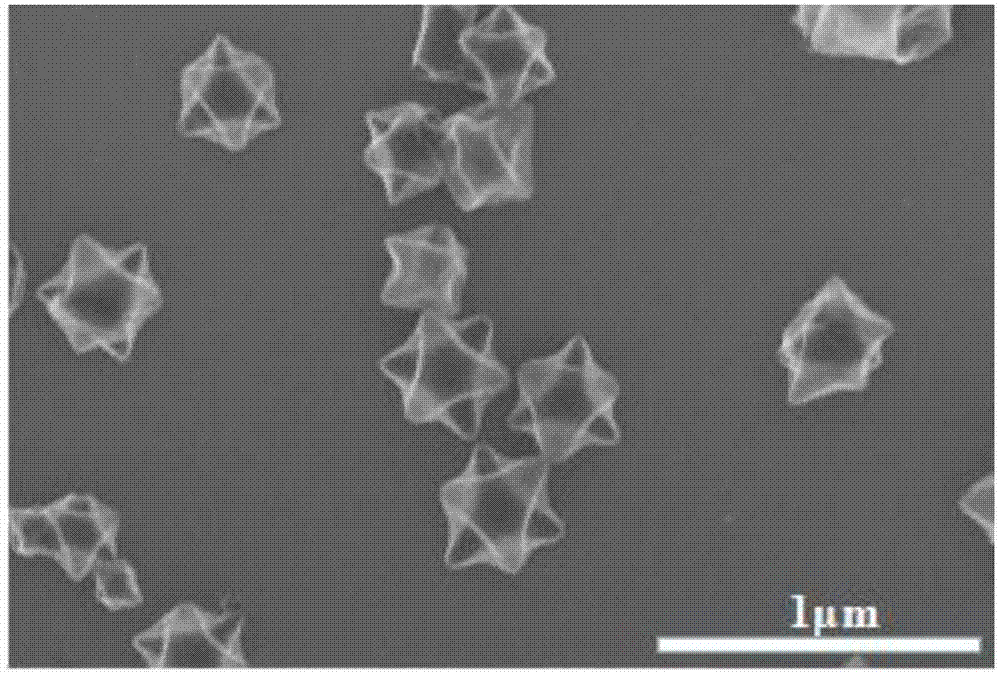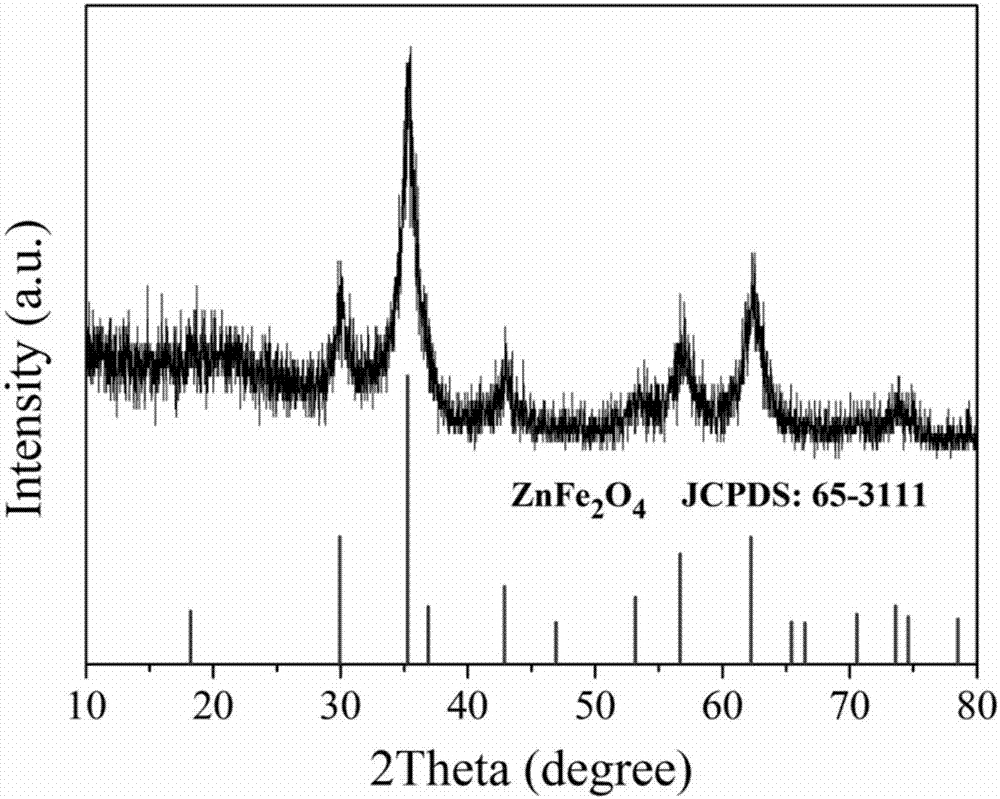Preparation method of zinc ferrite nano-material
A nanomaterial, zinc ferrite technology, applied in the field of preparation of zinc ferrite nanomaterials, can solve the problems of poor selectivity of gas-sensing materials, high working temperature, easy phase transition, etc., and achieves good sensitivity, easy availability of raw materials, Simple preparation method
- Summary
- Abstract
- Description
- Claims
- Application Information
AI Technical Summary
Problems solved by technology
Method used
Image
Examples
Embodiment 1
[0020] Preparation of Fe III -MOF-5 nanomaterials
[0021] Zinc nitrate hexahydrate (19.2 mg), iron acetylacetonate (29 mg), terephthalic acid (4.8 mg), polyvinylpyrrolidone (96 mg) were dissolved in a mixed solution of N,N-dimethylacetamide and ethanol (12.8 mL, V / V=5:3). The above mixture was stirred at room temperature for 10 minutes, then the obtained suspension was transferred into a 20mL reaction kettle and heated at 100°C for 24h, the obtained product was centrifuged with DMF and ethanol successively, and then dried in a vacuum oven at 60°C for 6h. Get the precursor Fe Ⅲ -MOF-5 nanomaterials.
Embodiment 2
[0023] Preparation of Fe III -MOF-5 nanomaterials
[0024] Dissolve zinc nitrate hexahydrate (23.2mg), iron acetylacetonate (30mg), terephthalic acid (5mg), polyvinylpyrrolidone (100mg) in a mixed solution of N,N-dimethylformamide and ethanol (12.8mL , V / V=5:3). The above mixture was stirred at room temperature for 10 minutes, then the obtained suspension was transferred into a 20mL reaction kettle and heated at 140°C for 12h, and the obtained product was centrifuged with DMF and ethanol successively and dried in a vacuum oven at 80°C for 10h. Get the precursor Fe III -MOF-5 nanomaterials.
[0025] The structure was confirmed by X-ray powder diffractometer analysis, such as figure 1 The resulting precursor Fe III -MOF-5 nanomaterials have no obvious diffraction peaks, indicating that they are amorphous.
[0026] The obtained Fe was characterized by scanning electron microscopy III - Morphology of MOF-5 nanomaterials. Such as figure 2 As shown, the resulting Fe III -...
Embodiment 3
[0028] Preparation of ZnFe 2 o 4 nanomaterials
[0029] Fe in embodiment 1 or embodiment 2 III - MOF-5 nanomaterials (20 mg) were weighed into a crucible, placed in a muffle furnace, and calcined at a high temperature in an air atmosphere. The calcination temperature is 450°C, the heating rate is 1°C / min, and the calcination time is 2h.
[0030] The structure was confirmed by X-ray powder diffractometer analysis, such as image 3 The nanomaterial shown is a spinel-structured ZnFe 2 o 4 nanomaterials.
[0031] The obtained ZnFe was characterized by scanning electron microscope 2 o 4 Morphology of nanomaterials. Such as Figure 4 As shown, the resulting ZnFe 2 o 4 Nanomaterials have an octahedral structure and a rough surface.
PUM
| Property | Measurement | Unit |
|---|---|---|
| particle diameter | aaaaa | aaaaa |
Abstract
Description
Claims
Application Information
 Login to View More
Login to View More - R&D
- Intellectual Property
- Life Sciences
- Materials
- Tech Scout
- Unparalleled Data Quality
- Higher Quality Content
- 60% Fewer Hallucinations
Browse by: Latest US Patents, China's latest patents, Technical Efficacy Thesaurus, Application Domain, Technology Topic, Popular Technical Reports.
© 2025 PatSnap. All rights reserved.Legal|Privacy policy|Modern Slavery Act Transparency Statement|Sitemap|About US| Contact US: help@patsnap.com



